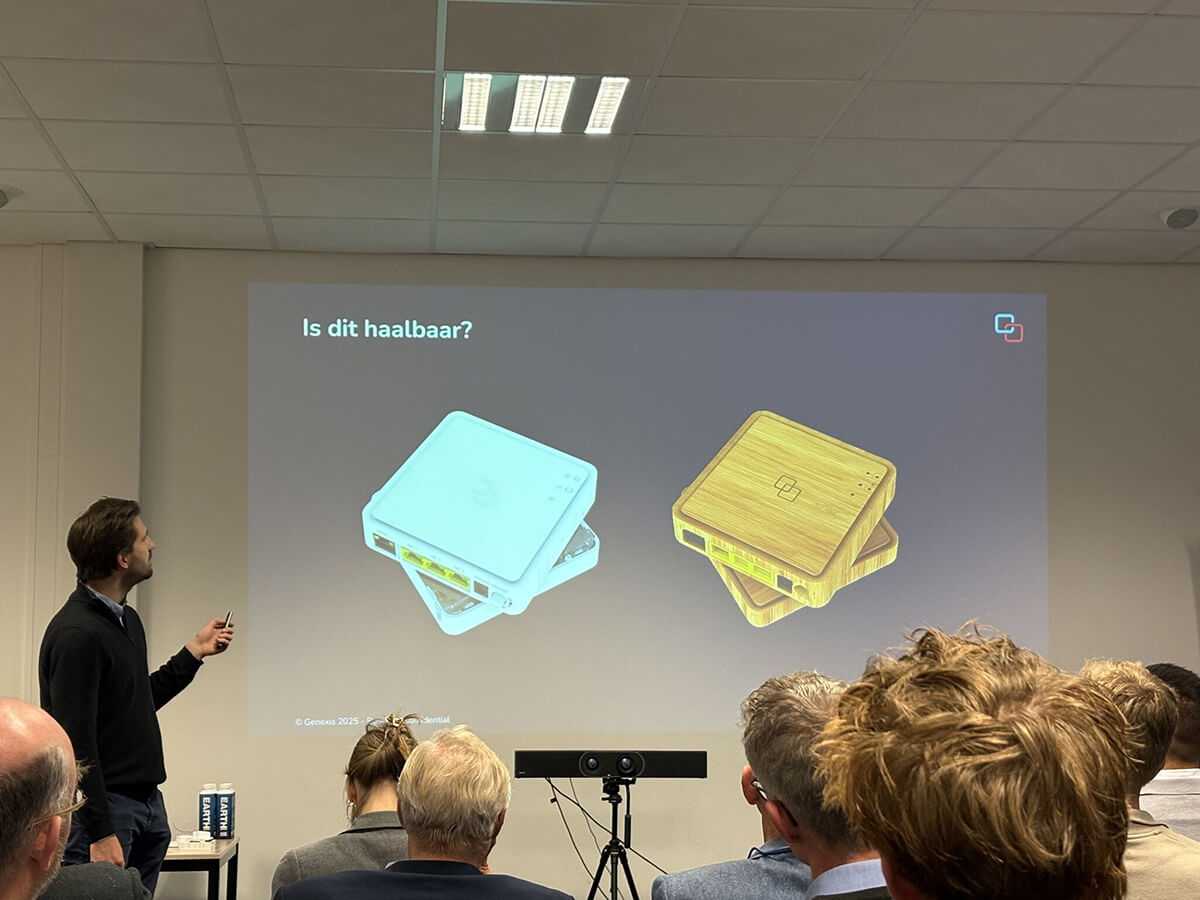This year’s second Tech Summit, organized by SCTE Benelux and NLConnect, brought together engineers, technical specialists, and business developers for an in-depth look at the intersection of technology and sustainability. It was a chance to explore how product development, market realities, and sustainability come together, often in ways that the broadband industry still finds challenging to align.
We shared our perspective on how product engineering, circularity, and sustainability strategy connect, emphasizing that the design phase is where true environmental impact starts.
The reality: sustainability is challenging
During presentations and audience discussions, a common theme emerged: many agreed that sustainability is crucial for both people and the planet, but integrating it into business practices remains challenging. Although many companies have taken steps, there are still hurdles to overcome, including:

- Limited internal resources and expertise
- Cultural resistance to new processes
- Geopolitical pressures that shift focus
- A commercial market that is still hesitant to pay for more sustainable alternatives
Solutions that deliver clear long-term benefits, such as energy savings or modular products that reduce truck rolls, still face skepticism unless there is a tangible ROI. While this sparked many engaging conversations, the willingness to invest in sustainability remains a barrier.
Why is the product design phase crucial?
My presentation highlighted a critical insight from the EU:
80% of the product’s environmental impact is determined during the design phase.

This means the best opportunity to reduce a product’s carbon footprint and increase product circularity isn’t at the end of its life. It’s during the design phase, before the product even exists. Creating products that are easy to disassemble, refurbish, or repair helps build a strong business case for circularity at the end of a product’s life. Real-world examples include the Fairphone, a modular phone that follows circular design principles, and the Swedish Tripp Trapp highchair, which adjusts as a child grows.
Here are some key concepts to consider:
1. Apply circular design and the high-value model
Circularity is connected to maintaining high economic value in products. By keeping materials and components high in functional value, applying circular principles becomes “affordable.” Rather than recycling or disposing of products, companies preserve their economic value. Designing products for easy disassembly, modularity, and part reuse opens the door to profitable circular business models.
2. Quantify circularity with the Circular Transition Indicator
Using the Circular Transition Indicator (CTI) method, companies can quantify a circularity score per product, tracking:
- How much material inflow is circular
- How much material outflow can be treated circularly
Starting simple, such as assessing plastics and electronics, can lead to actionable metrics.

3. Integrate sustainability from the start
Instead of just tweaking office practices or making late-stage product changes, sustainability needs to become an engineering mindset from the very beginning. Choices about materials, size, weight, component reuse, and ease of refurbishment all have both environmental and commercial value.

Designing for circularity benefits the planet by reducing costs, increasing lifecycle value, and strengthening resilience in future resource-scarce markets. In conversation with the audience, some participants emphasized the need to incorporate circularity into tender requirements, particularly ease of repair and refurbishment.
Where the industry goes next
Circularity and thoughtful product design must take center stage:
- Every product generation should become more circular in its design than the last.
- Assess recoverability with the value chain to improve product design.
- Commit to scaling secondary material use in the long term.
- Circular opportunities must be acted on — not only documented in an Environmental Product Declaration.
- Collaboration across the value chain is essential.
Call-to-action: Circular Design Manifesto
From Genexis, we propose co-creating a Circular Design Manifesto for broadband equipment —a shared commitment to designing products that extend material use, reduce waste, and, as a result, lower long-term carbon impact, rather than a goal in itself. If we focus on design and circularity today, substantial carbon reductions will follow, directly or indirectly, without compromising performance or cost.
The Tech Summit showed that sustainability is no longer an optional add-on to technical innovation. It is becoming integral to product strategy, customer value, and industry competitiveness. The more we reshape our thinking around product design, modularity, and circularity, the more sustainable our industry becomes.



